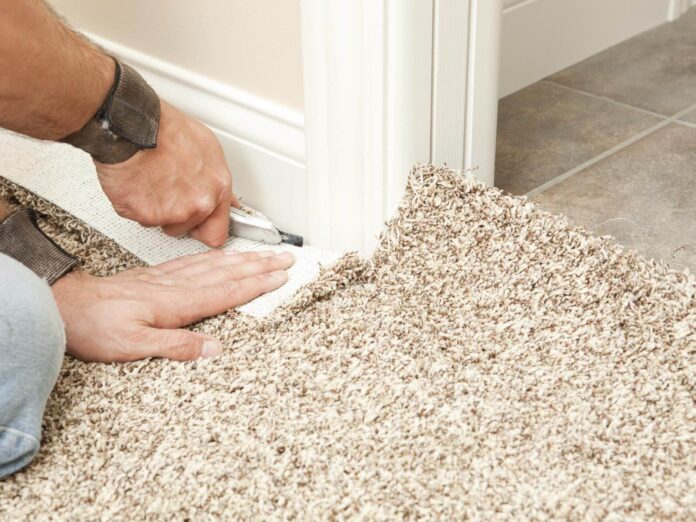- Improved Comfort: carpet installation helps to create a softer, more comfortable floor surface that is perfect for walking, playing, sitting, and more. It also helps to reduce noise and echoes throughout the home.
- Increased Safety: Installing carpet helps to reduce the risk of slipping and tripping on hard surfaces. Carpet is much less dangerous than hardwood or tile floors and can help to keep everyone in the home safe.
- Enhanced Aesthetics: Carpet installation can dramatically improve the look and feel of any room. With a variety of colors, patterns, and textures to choose from, you can customize your space to fit your style.
- Improved Air Quality: The carpet helps to trap dust, pollen, and other allergens that can trigger allergies or asthma. This helps to improve the air quality of your home.
- Cost Savings: Installing carpet is much less expensive than other flooring options such as hardwood or tile. This can help to reduce overall renovation costs.
How to Measure and Cut the Carpet for Installation
- Measure the room where the carpet is being installed. Measure the length and width of the room in feet.
- Calculate the total square footage of the room. Multiply the length by the width to get the total square footage.
- Buy carpet padding and carpet. Add 10 percent to the total square footage to account for waste. For example, if the total square footage of the room is 200, buy 220 square feet of carpet and carpet padding.
- Lay out the carpet padding in the middle of the room. Smooth out any wrinkles and cut off any excess material.
- Place the carpet on top of the padding. Make sure the carpet is centered and aligned properly. 6. Cut off any excess material. Make sure to leave at least 1/2 inch of extra carpet on all sides in case of any shrinkage or stretching.
- Trim the edges of the carpet so that it fits along the walls. Use a utility knife and a straight edge to make sure the cuts are straight.
- Secure the carpet to the floor. Use staples, nails, or carpet tacks to secure the edges of the carpet to the floor.
Practical Tips for Maintaining Carpet Installations
Vacuum regularly: Vacuuming your carpets regularly is essential to help prevent dirt and debris from settling into the carpet fibers. This will also help to improve air quality in the home and keep your carpets looking new.
Spot clean when necessary: When a spill or spot occurs, it is important to address it quickly. Use a damp cloth or sponge and gently blot the area.
Remove shoes: Removing your shoes before walking on your carpets will help to minimize the amount of dirt and debris that gets tracked in.
Avoid using harsh chemicals: Many harsh chemicals used for cleaning can damage carpets. Always test any cleaning product in an inconspicuous area before using it on the entire carpet.
Take caution with furniture: It is important to use caution when moving furniture or other heavy items on carpeting. Use a piece of plywood or another hard surface when necessary.
Professional carpet cleaning: Professional carpet cleaning is recommended at least every 12 to 18 months. This will help to remove deep-down dirt and debris and extend the life of your carpet installation.


